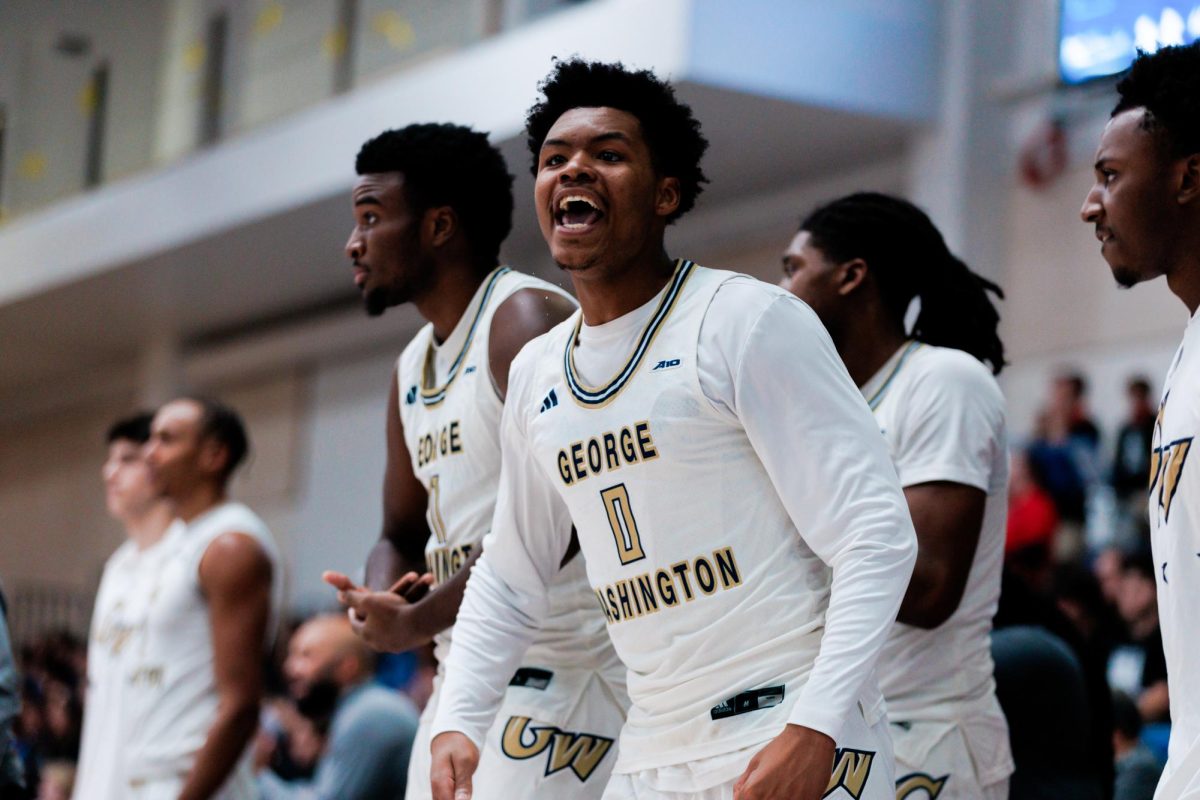
Where: The Smith Center, Washington, D.C., ASN, Comcast SportsNet Plus (TV)
When: Saturday, Jan. 9 at 8 p.m.
After a crunch-time meltdown at Saint Louis Wednesday night, the Colonials enter a week-long stretch full of opportunities to right the ship, beginning with a home game against Duquesne Saturday night.
Since conference play began, neither GW or Duquesne has looked like itself. The Colonials have gone from a ball-strong team to one that has turned the ball over on 23.8 percent of possessions over two conference games and the Dukes have abandoned their usual sharp-shooting attack and hit just 16.7 percent of their three-point shots.
Who will get back to form first? Here’s what to watch for in the game:
The Case for the Colonials:
Duquesne has been bitten by the injury bug this season. The Dukes lost senior captain Jeremiah Jones for the season with an ACL tear on Dec. 19 against Robert Morris. He’s been replaced by sophomore Eric James in the starting lineup at small forward. James is averaging 8.7 points and 4.3 rebounds per game overall and 9.6 points and 11.6 rebounds per game since Jones went down.
Still, the loss hit a Duquesne frontcourt that was already in for some matchup problems at GW. Junior center Darius Lewis is 6-foot-11, but doesn’t seem to play physically, especially on offense. He’s averaging 6.7 points and 5.0 rebounds per game. Duquesne’s other starter up front is L.G. Gill, a 6-foot-8 junior forward who is averaging 9.3 points and 6.7 rebounds per game.
That group gives Duquesne the ability to distribute minutes evenly, but Gill, Lewis may have a hard time hanging with Tyler Cavanaugh, Kevin Larsen and Patricio Garino’s combination of height, inside-out moves and physicality.
Those mismatches, and Duquesne’s inability to defend against the pass (the Dukes, according to KenPom, have the second-worst defensive assist rate in Division I), could create some opportunities for the Colonials to succeed running high-low sets, which Larsen and Cavanaugh are well suited for.
On defense, the assumption will likely be that Duquesne will return to shooting form and that preventing threes is key. Luckily for the Colonials, this is an area in which they have been strong. GW’s three-point defense, though missing in a critical moment against Saint Louis, ranks 45th in Division I according to KenPom, holding opponents to just 30.9 percent shooting from beyond the arc.
The Case for the Dukes:
Duquesne, first and foremost, is a great shooting team with an historically great three-point threat in Micah Mason, who is averaging 15.2 points per game on 46.2 percent shooting, 40.2 percent from three-point range. And Derrick Colter (17.5 points per game on 41.3 percent shooting) isn’t too shabby either.
Mason was 2-for-9 in Duquesne’s loss to Davidson on Jan. 6 in his first game back from resting a sprained ankle suffered two games before against Georgia Tech. He was 0-6 from three-point range, unlikely to happen twice, and the Dukes still avoided a blowout at the hands of the dangerous Wildcats.
Duquesne has found ways besides hot shooting to win games this season. The Dukes are 9-1 in games in which they have outrebounded opponents, so being tough on the boards will be a key for GW to get the win.
Duquesne has also been good about exploiting easy opportunities when opponents key in along the perimeter too much. The Dukes are shooting 53.5 percent on two-point shots, so when they choose not to shoot from the outside, they tend to choose well.
The Bottom Line: There’s something that seems illogical about the notion that the same collections of skeletal and muscle matter made up of the same cells and organelles and controlled by the same DNA are inherently different at home than on the road. Yet there’s no evidence so far this season that suggests the Colonials won’t get the job done in the Smith Center. Duquesne has the edge in perimeter play, GW up front. Tiebreak goes to the home team, which just so happens to play very well there.






